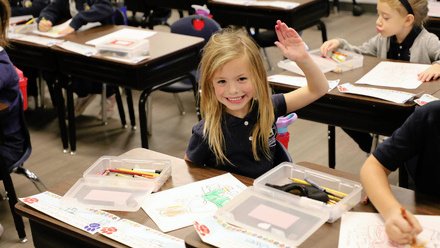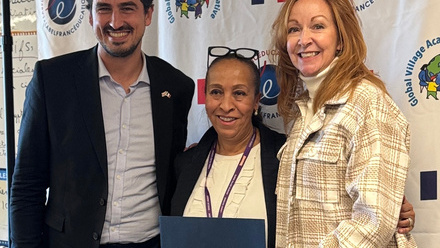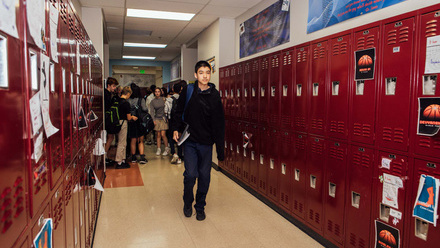Serving Colorado’s kids, one charter at a time
By Kim Daly
One recent Tuesday night, after carpool pickups, dinner preparations, and walking the dogs, I finally settled into bed with my earpods and phone. No, I wasn’t binge-watching the latest season of Ginny & Georgia — though I still intend to. Instead, I was delving deep into my role as a charter school board member. Think: legal responsibilities, policy development, and performance oversight.
Honestly, I’d much rather watch dark family secrets unravel.
Serving my community wasn’t new to me, but the intensity of this training was—and I suddenly understood my procrastination.
My days were already full with clients, parenting, and previous board commitments. After serving in various PTO roles and keeping our school’s nonprofit foundation afloat over the years, I was burned out. I retreated as only an extroverted individual can, by simply chairing a committee and showing up to cheer at field day, soccer games, and the annual fun run.
And then, the spark was back.
School board service is almost never easy, but I stepped up because I believe in supporting the next generation. Their education matters. School choice matters. My family has experienced the benefits of our local charter school, and I want all families to have access to a positive, enriching public school experience.
As indicated by Colorado Department of Education (CDE) data from the 2022-23 school year, Colorado’s charter schools operate a wide array of innovative programs. Because they have the autonomy to craft educational models aligned with their mission — ranging from Core Knowledge, STEM, and Expeditionary Learning to Language Immersion, College Prep, Montessori, and beyond — the options are impressive.
Each school reflects a unique educational philosophy, shaping how children learn and how schools serve their communities. These public schools are also geographically diverse, spanning rural, urban, and online environments. They vary in both enrollment numbers and grade configurations.
But what unites all our schools is a common purpose: to serve the local community and its unique, diverse needs.
Yes, there are replications of very successful models, such as DSST (Denver School of Science and Technology). But the majority of the state’s 261 charter schools are regular single schools that, more often than not, were founded in church basements or community centers by educators and parents who simply wanted a better educational environment for their students.
As I step into this new board role, school board candidates across the state are campaigning. If elected, these leaders will make decisions affecting leadership, curriculum, finances, and facilities across entire districts for thousands and thousands of students, directly impacting students’ opportunities and futures.
It’s critical that these candidates prioritize serving our communities and families effectively, especially as they most often serve as the authorizers of charter schools. So ask the tough questions: where do they stand on public charter schools? How will they support diverse educational options?
Then, make your voice heard — vote.
I’m happy to say I have successfully completed my extensive series of school board training videos and onboarding. Like the core knowledge curriculum that my school embraces, my previous experience volunteering has prepared me well.
Ultimately, families deserve schools that meet their unique and diverse needs, and that requires community members to not only vote, but also step up. I’m ready to serve, even if it means postponing my Netflix binge a little longer.
Kim Daly serves on the board of the Jefferson Academy Charter Schools, headquartered in Westminster. This post originally appeared in the Denver Gazette.






